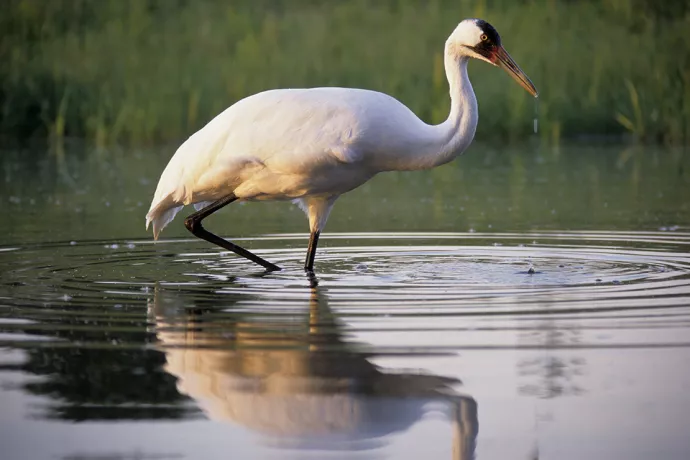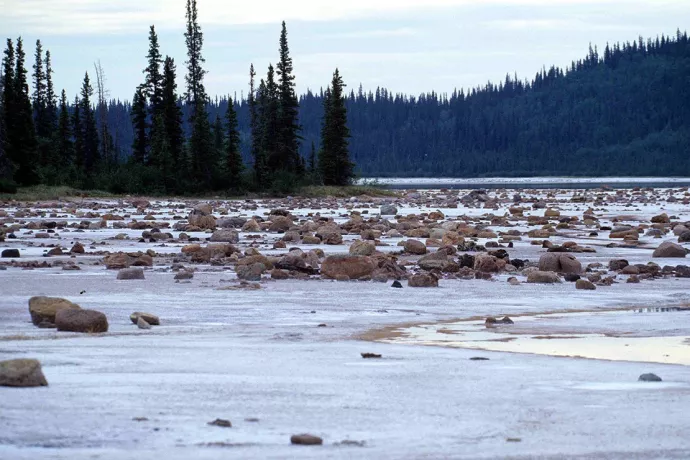
Environmental laws in Canada fall short of addressing the ongoing biodiversity crisis
Caribou, whooping crane, Gibson’s big sand tiger beetle and dwarf western trillium are among the estimated 80,000 known species (not including viruses and bacteria) in Canada. Of these, scientists have enough information on almost 30,000 species to know that about 20 per cent are imperilled to some degree.
When Canada developed its first national Biodiversity Strategy in 1995, it did so under the assumption that a strong foundation of laws and policies was already in place. Twenty-five years later, however, prevailing biodiversity trends indicate otherwise.
For example, prairie grasslands have lost at least 70 per cent of their historical extent, and grassland birds have declined by 57 per cent since 1970. Only 24 per cent of 125 Canadian marine fish and invertebrate stocks are currently considered healthy, with 18 in critical state.
Our new research demonstrates how the management of biodiversity in Canada is undertaken through a bewildering array of laws, regulations and other tools administered by different federal, provincial and territorial departments. Collectively, these provide fragmented and inadequate protection to species and ecosystems.
More must be done immediately to overcome the inherent weaknesses of a federal system that prioritizes regional natural resource development over national goals to protect biodiversity.
Canada’s biodiversity legal protection system
With rich biodiversity across its huge landmass and coastal marine areas, Canada has a major role to play in addressing global biodiversity loss. Canada was the first industrialized country to sign the United Nation’s Convention on Biological Diversity (CBD) in 1992. The CBD seeks to compel the development of national strategies for the conservation and sustainable use of biological diversity. Canada has been an active player in negotiations to renew and strengthen the treaty ever since.
Yet, in our research, we identified 201 laws in Canada with some bearing on biodiversity protection, and the vast majority provide few direct safeguards for species and ecosystems.
Many of these laws govern the extraction of natural resources, and focus on mitigating negative effects rather than avoiding them in the first place, or manage the harvest of wildlife or fish populations. A variety of other statutes, ranging from pollution control to climate change, may incidentally benefit biodiversity.
Of those laws with biodiversity protection as the paramount purpose, most are devoted to protected areas and species at risk, containing provisions that vary in strength and are unevenly distributed across the country. No Canadian jurisdiction has any statute in force specifically devoted to biodiversity conservation.
Nova Scotia did, however, pass a Biodiversity Act in early April. It’s the first legislation in Canada ostensibly devoted to the protection of biodiversity in the full meaning of the word, but it faced so much opposition that the act was stripped of its prohibitions and enforcement measures.
The act remains a purely enabling statute that merely grants the provincial environment ministry the power to take certain actions, like setting up a “biodiversity management zone.” This means the ministry has no authority to forbid or issue permits for activities that cause harm to species or ecosystems, as was originally envisioned.

Taking responsibility
A big challenge to biodiversity protection is the fragmented division of responsibilities. In Canada, provinces and territories exert control over natural resources. The laws that encourage the development of those resources operate under the assumption that public land can meet the needs of multiple users, and adverse effects from its development can be successfully minimized.
Just this week, however, the United Nations World Heritage Committee reported that Wood Buffalo National Park, the largest in Canada, “likely meets the criteria for inscription on the List of World Heritage in Danger.” This is largely due to the cumulative effects of industrial developments outside the park stemming from unco-ordinated and piecemeal decisions by Alberta and British Columbia governments.
To add to this challenge, environment ministries responsible for biodiversity protection have little financial bargaining power at the cabinet table relative to revenue-generating ministries responsible for the natural resource development. Yet the bulk of responsibility for co-ordinating action on biodiversity rests with these small and under-funded agencies.
Making biodiversity conservation a priority or guiding principle in the bones of decision making, as the CDB envisions, is nowhere in sight. Similarly, efforts recognizing the need to break out of policy silos and address the combined crisis of biodiversity loss and climate change in a synergistic way are nowhere to be found outside of occasional pieces of government rhetoric.
A call to action
Our research provides an important look at why it is urgent that Canadian jurisdictions work together to confront the striking mismatch between stated national goals and the ability or willingness to achieve them. For example, Canada’s commitments to protect 30 per cent of its land and oceans by 2030 is an important expression of federal leadership that will rely in large part on provinces and territories to implement.
The principal drivers of biodiversity loss within Canada — land conversion, overfishing, climate change, pollution and invasive alien species — mirror those around the world. Right now, the 196 countries that are parties to the CBD are working together on virtual platforms to complete the Post-2020 Global Biodiversity Framework, which will set new targets to achieve by 2030, as the nature counterpart to the 2015 Paris Agreement for climate change.
Once this is in place by the end of 2021, attention should immediately turn to domestic implementation. Canada must replace the aged and incomplete Canadian Biodiversity Strategy so that jurisdictions can co-operate to actively reduce pressures on biodiversity outside of protected areas.
The development of a new Canadian strategy and associated action plan could play a key role in defining how to achieve transformative change to address biodiversity loss. It should include actions like mainstreaming biodiversity considerations into policy making across jurisdictions, proper valuation of nature as an asset while halting harmful financial subsidies, and leading co-operative implementation across Canada, with an important emphasis on Indigenous-led conservation.
Together, these steps would provide an opportunity to identify the regulatory, legislative, enforcement, financing and accountability measures required to address the ongoing loss of biodiversity and ecosystem services in this second largest country of the world.
Janice C. Ryan is an adjunct professor with U of T's Department of Ecology and Evolution, Andrea Olive is an associate professor of Political Science and Geography at UTM, and Jaime Grimm is a PhD student with U of T's Department of Ecology and Evolution. This article first appeared in The Conversation.
